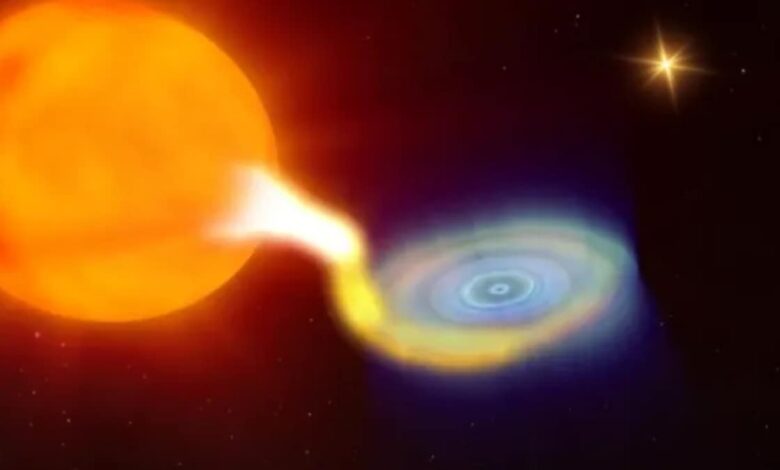Rare triple black hole system discovered in Milky Way galaxy

Astronomers have identified a black hole with a closely associated companion star and a distant third star in orbit, forming the first known ‘triple black hole’ system. This discovery, detailed in recent research led by Kevin Burdge of the Massachusetts Institute of Technology (MIT), sheds new light on how some black holes can form more quietly than traditionally thought.
What makes V404 Cygni unique?
This rare system, called V404 Cygni, is located approximately 8,000 light-years from Earth and is located in the Milky Way. It consists of a black hole and a nearby star, previously identified as an ‘X-ray binary’, where the black hole consumes material from its neighboring star. However, new insights show that there is a third, much more distant star orbiting this pair. This outermost star completes a single orbit in an astonishing 70,000 Earth years. This indicates a weak gravitational bond between the stars and the black hole.
A surprising birth process
Normally, black holes are born from violent supernova explosions, which often give a “natal kick” to loosely bound stars, ejecting them from the system. The presence of this third star in V404 Cygni suggests a different scenario. Researchers propose that this black hole may have been created by ‘direct collapse’. The direct collapse is a process in which a star quietly implodes, sparing surrounding stars from a powerful kick.
Implications for black hole research
This finding raises questions about the formation of other black hole systems. “It is intriguing to consider whether more triple systems exist,” Burdge noted. These show us how such arrangements can provide insight into the evolution of black holes. Observations with the Gaia Space Telescope confirmed the stars’ coordinated movements, with calculations suggesting there is only a one in ten million chance that these stars are not part of the same system.


![Arcane season 2 act 3 ending explained: is [SPOILER] dead, is there a post-credits scene, will there be a season 3, and more of your biggest questions answered Arcane season 2 act 3 ending explained: is [SPOILER] dead, is there a post-credits scene, will there be a season 3, and more of your biggest questions answered](https://usmail24.com/wp-content/uploads/2024/11/Arcane-season-2-act-3-ending-explained-is-SPOILER-dead-390x220.jpg)

